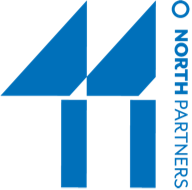At 44 Degrees North Partners, we’re fortunate to work with a disproportionate number of women CEOs. Based on our experience, it’s easy to see why their ranks should be rising much faster. We decided there’s no better time than Women’s History Month to honor the lessons we’ve learned from working with these effective and engaging leaders during the past five years.
Lesson 1: Don’t be a victim.
To reach the C-suite, virtually every woman endures some form of hardship and has the battle scars to prove it. But the successful ones are highly resilient. They don’t compromise their values, nor do they succumb to the victim mentality. They focus on their work. They find innovative ways to exist in the “good old boys’ club” – and seek opportunities to share their story with the up-and-comers in their organization.
Lesson 2: Be vulnerable and open-minded.
The dictionary definition of vulnerable is “capable of being physically or emotionally wounded.” In our experience, female CEOs are particularly effective at being vulnerable, sharing their personal stories, opening the floor to opposing points of view – and they’re more often rewarded than wounded. Rewarded with trust, engagement and loyalty from their teams, business partners, and boards. They seem to innately understand that their ability to listen and connect is ultimately more beneficial to their business than their ability to command and control.
Lesson 3: Build relationships that benefit all.
Just as the most successful businesses understand the importance of customer relationships, these women CEOs understand the value of stakeholder relationships. They have a clear grasp of the diverse stakeholder groups that matter to their organization, and they effectively prioritize their engagement with them. They know when to talk – and when to listen. They look for mutual benefit and win/win opportunities. And they understand the unmatched power of employee advocacy and are open to new ideas for connecting with all levels of the team.
Lesson 4: Know what matters.
Perhaps one of the most important traits of a CEO is the ability to discern what matters from what doesn’t. While there’s no universal right and wrong – the decision is organization- and industry-dependent – a CEO’s ability to do this (or not do it) becomes visible over time. We’ve watched with awe women CEOs with a well-developed sense of what to dive into, what to scan, and what to delegate. At the end of the day, it’s all about how they spend their time. And these CEOs, perhaps as a result of a lifetime of multitasking, know how to prioritize theirs.
Lesson #5: Find balance in your own way.
Every female CEO we’ve worked with has had to balance work with life, juggling a big, visible job with a meaningful personal life. What woman hasn’t? What’s notable about these women is how they strike that balance in a way that is uniquely theirs. They don’t follow a formula; they don’t hide their balancing act and they don’t expect special treatment. While she’s not one of the CEOs we’ve had the pleasure of working with, Indra Nooyi, former CEO of PepsiCo, serves as a great example, acknowledging that balancing career with family “hurt like hell.” In her goodbye letter to PepsiCo employees in 2018, she admitted that, during her tenure at the company, there were moments she’d wished she’d been able to spend more time with her children and family – and she challenged employees to “think hard about time.” In this month dedicated to celebrating the women who have come before us, we think that may be the most precious lesson of all.
At the end of the day, in a world in which CEOs must consider the pressing and evolving needs of all their stakeholders — and demonstrate their ability to confront significant uncertainty (Source: PwC 23rd Annual Global CEO Survey, Fall 2019), female CEOs may be just what this economy – and our world – need now.
